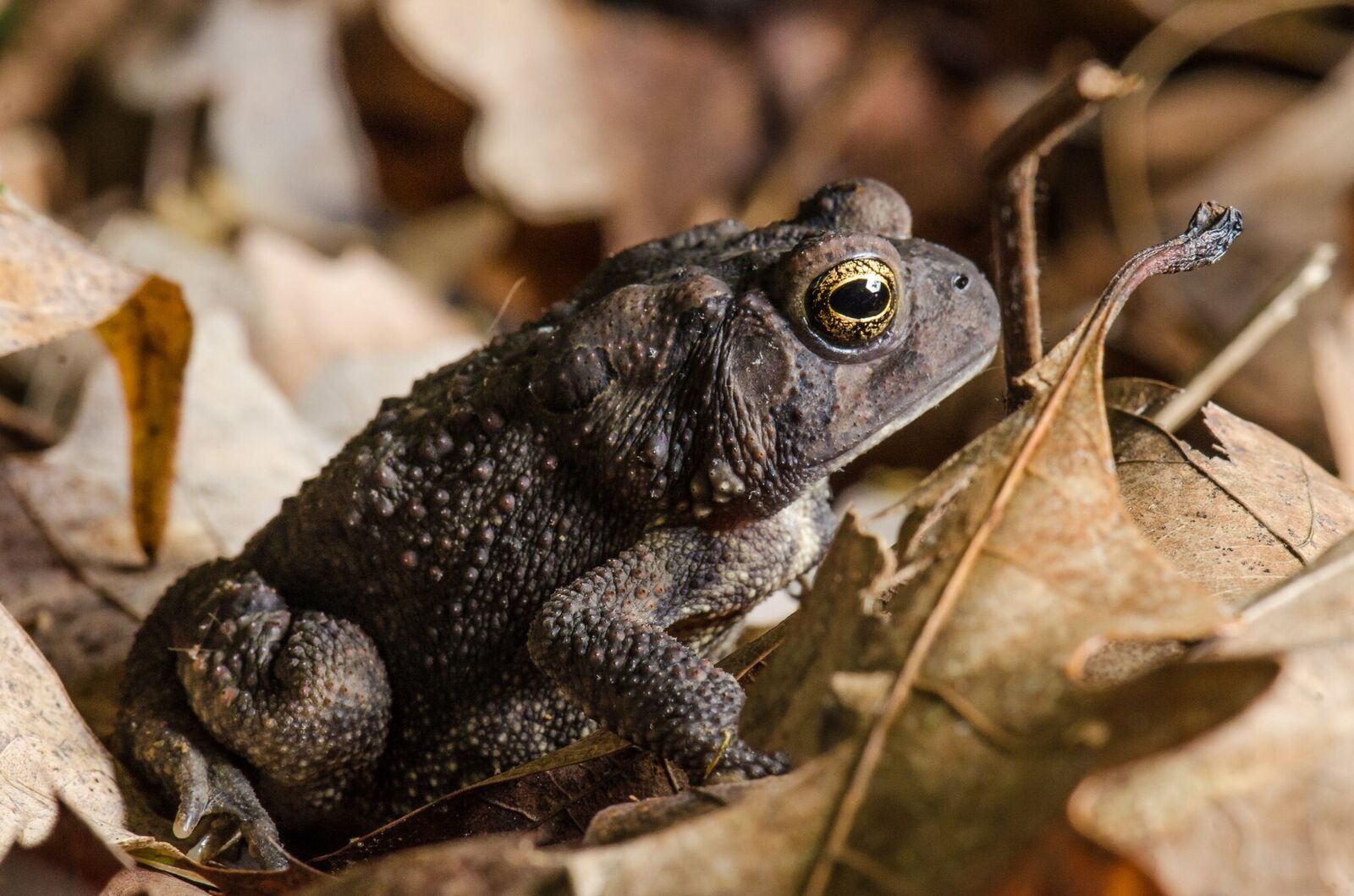Phil Bishop is known around town as “the frog guy”. Image from nzfrogs.org
Earlier this week, I had the opportunity to attend a talk by Phil Bishop, a professor of Zoology here at the University of Otago. Phil specializes in amphibians, and is one of the world’s foremost advocates for amphibian conservation. He gave a great presentation about frogs and why they’re so important for both humans and the environment, and also why we need to be especially concerned about declining amphibian populations.
But most people don’t really think about amphibians too often. As we’ve discussed before, more charismatic animals like mammals and birds seem to get most of the attention (not that there’s anything wrong with caring about birds and mammals; we just have to remember that there’s other important wildlife out there too). So this week, it’s all about amphibians: What are amphibians? Why do they matter? Why are they disappearing? And what can we do about it? All of that, plus some cool amphibi-friends, on this week’s frog blog.
What are amphibians?
Brown toad (all toads are frogs). Image by Spencer Cox.
Amphibians are a very old class of vertebrates (animals with backbones), and were the first vertebrates to walk on land – reptiles, birds, and mammals are all descended from amphibians. They first evolved from fish with lungs and limbs during the Devonian period, about 370 million years ago. For a while, they were the dominant type of land animal on the planet, but were eventually shouldered out by reptiles, and then later, mammals. Those that survived grew smaller and smaller, and several types of amphibians disappeared. They generally live on land, but need water to reproduce (you may have seen ponds or puddles full of tadpoles in the spring). They also need to live in damp environments – their skin must stay moist in order to survive. (There are several types of frogs that live in deserts, and they spend their time buried near groundwater and only come to the surface when it rains.)
This desert rain frog is specially adapted for life in a dry climate. It also has a very fierce battle cry.
Modern amphibians fall into three categories: frogs, salamanders, and caecilians. Frogs (toads are a type of frog) make up about 90% of amphibian species, and are the best-known amphibians. Salamanders and newts are more lizard-like in appearance, while caecilians have no limbs and tend to resemble worms or snakes. Because frogs dominate the distribution, it’s not uncommon for people to refer to amphibians collectively as just “frogs”. Amphibians are found all over the world except Antarctica. Amphibians range in size from the miniscule Paedophryne amanuensis (also the world’s smallest vertebrate) to the Chinese giant salamander, which can reach 1.8 m in length.
Caecilians are legless amphibians. Image by Teague O’Mara.
The Chinese giant salamander lives up to its name. Image by James Joel.
Salamanders and newts are more like lizards, but still need lots of moisture. Image by Seánín Óg.
Paedophryne amauensis, the world’s smallest frog, amphibian, and vertebrate, on a US dime. Image from E.N. Rittmeyer et al.
Why are amphibians important?
A heron and its lunch, Kruger National Park.
A vivid ad by the Vancouver Aquarium.
Almost all amphibians are predators, and most can also be prey. Most amphibians occupy the crucial middle trophic level in an ecosystem, meaning that they both eat a lot of things and are eaten by a lot of things. All kind of birds, reptiles, and mammals (including humans) eat frogs. And in turn, frogs eat tons of smaller creatures like invertebrates, small mammals and reptiles, and occasionally other amphibians. Frogs are probably best known for eating bugs – Phil Bishop estimates that over the course of a year, 1000 frogs eat about 5 million insects. Amphibians play a key role in managing insect and pest populations.
Frogs are also one of the most commonly used vertebrates in medical research, alongside mice. They’re particularly useful for studying embryonic development, since they lay large transparent eggs through which we can see the new frog developing in real time. Some 10% of all Nobel-Prize-winning research has been conducted on frogs, and who among us hasn’t done a frog dissection of some sort in a biology class?
Finally, amphibians are also an excellent indicator of environmental problems (a sort of ecological canary in the coal mine). Amphibian skin is extremely sensitive, and is permeable to water, so it must be kept moist. They also breathe through their skin – some of the more primitive amphibian species don’t even have lungs because all of their oxygen needs are taken care of by their skin. This sensitive skin also means that amphibians are extremely sensitive to pollutants and temperature changes, and also that they’re more vulnerable to ecosystem changes (for instance, changes to water sources). Ecologists know that if the frogs start disappearing from an ecosystem, that ecosystem is unhealthy. And because frogs occupy that middle trophic level, their disappearance can have far-reaching and disproportionately large effects on the biodiversity of that ecosystem.
Why are amphibians disappearing?
We hear all the time about endangered mammals and birds, but amphibians are doing far worse – largely due to their sensitivity and ecological needs. The major threats to amphibians are as follows:
Amphibians are highly susceptible to chemical pollutants, which can cause mutations like this, as well as cause internal damage. Image from That Reptile Blog.
Habitat loss – amphibians need a damp environment, and they need water to reproduce, so when humans come through and drain their pond or fill in their swamp, the frogs have nowhere to go.
Pollution – amphibians’ water permeable skin lets in a lot more than water. Various chemical pollutants have been known to cause physical deformities, disruption of internal systems, and wild hormone fluctuations (sometimes leading to changes in sex).
Climate change – yep, yet another problem caused by a warming climate. Specifically, the increasing amount of UV coming into the atmosphere (due to the damaged ozone layer) can harm the DNA of developing amphibians. Also, amphibians are much more sensitive to changes in temperature and weather patterns than many other animals.
Over-exploitation – frogs remain a popular source of meat in Europe and east Asia, and to a lesser extent, in the US. It’s very easy for importers to claim that the frogs were farmed, but for the most part, they’re taken from the wild.
Disease – a number of diseases have spread through frog populations around the world, including parasites called trematodes, and a fungus-based disease called chrytridiomycosis.
Amphibians have really gotten the short end of the biodiversity loss stick.
What can we do to help amphibians?
The simple truth is that amphibians need help, and we humans need to provide that help. There are efforts underway to protect frogs around the world – in 2005, ecologists and biologists created the Amphibian Conservation Action Plan, outlining what needed to be done over the course of 5 years to help amphibians. The International Union for the Conservation of Nature (IUCN) is also pushing for amphibian conservation efforts. We also just need more information – amphibians are among the least studied vertebrates out there. That’s why people like Phil Bishop need to be able to continue doing their research.
But you can also do your part to help our froggy friends! Protect wild places, and not just those where the most charismatic megafauna live – protect that little creek in your neighborhood too! Talk to people about frogs and try to get amphibians more into the public eye. Take photos of frogs and share them! (As we’ve seen, photographing something indicates that it has value) And you can also always donate to support conservation efforts: visit amphibians.org, the Amphibian Ark, or Save the Frogs!
Image by Tanto Yensen, via the Daily Mail.
A very special shout-out to Ruth and Jack Neff, who were the first people to get me excited about frogs many years ago. Love you!










